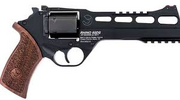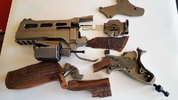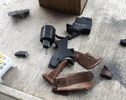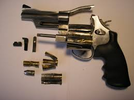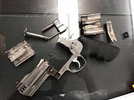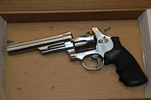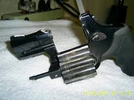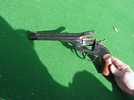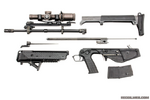CavalierLeif
Member
- Joined
- Apr 25, 2017
- Messages
- 76
I have a few S&W wheel guns and I enjoy the traditional aspect of them. They're what I'm used to shooting. However, sometimes I wonder about advancements in revolver technology and the seemingly limited variation outside of the same classic models from S&W and Colt and their clones.
The Chiappa Rhino has a - *ahem* - "unique" look that sets it apart from most other revolvers. The low bore axis is supposed to help with stability.
However, I don't see many people shooting them. Large public ranges are mostly dominated by Glock shooters, but I've seen enough revolvers and they're always of more traditional style. I've seen more Korths being shot than Chiappa Rhinos.
For those of you that have one or have shot one - what's the take? Is it niche but effective or more of a novelty gun?
The Chiappa Rhino has a - *ahem* - "unique" look that sets it apart from most other revolvers. The low bore axis is supposed to help with stability.
However, I don't see many people shooting them. Large public ranges are mostly dominated by Glock shooters, but I've seen enough revolvers and they're always of more traditional style. I've seen more Korths being shot than Chiappa Rhinos.
For those of you that have one or have shot one - what's the take? Is it niche but effective or more of a novelty gun?



